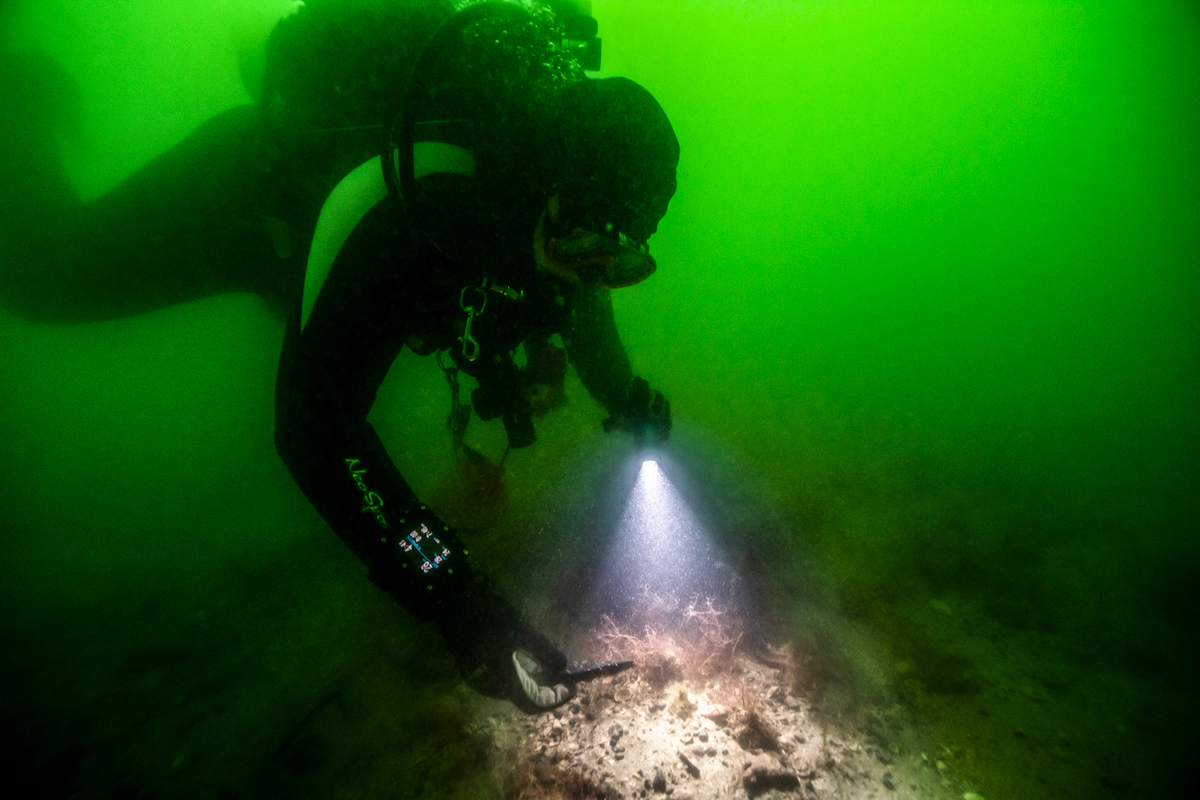Massive "Sea Dragon" Fossil Discovered in the UK
A roughly 33-foot fossil of a 180-million-year-old ichthyosaur was recently discovered in the U.K.
Ichthyosaurs were marine reptiles with dolphin-like bodies that lived during the Triassic and Jurassic periods alongside dinosaurs. They first appeared about 250 million years ago and became extinct around 90 million years ago.
The fossil was discovered in February of 2021 in the English East Midlands’ Rutland Water Nature Reserve, according to a press release from the Leicestershire and Rutland Wildlife Trust.
Joe Davis, a conservation team leader from Trust, was working on a routine re-landscaping project in the reserve when he drained the water in one of the park’s nine lagoons. After the water was cleared, Davis spotted what looked like clay pipes sticking up out of the mud. Upon closer inspection, he realized he was looking at several exposed vertebrae.
“The find has been absolutely fascinating and a real career highlight,” Davis says in the release. “It’s great to learn so much from the discovery.”
Davis’ findings were was followed up by a large-scale excavation led by Dean Lomax, an ichthyosaur expert and current visiting scientist at the University of Manchester, throughout August and September 2021.
The team has concluded the discovery to be one of the most significant to ever be made in the region.

Courtesy Leicestershire and Rutland Wildlife TrustA person stretches out on the ground for scale next to the partially excavated ichthyosaur fossil in the Rutland Water Nature Reserve.
"The size and the completeness together is what makes it truly exceptional," Lomax tells CNN, saying that the former discoveries of ichthyosaurs in the U.K. have been "nowhere near as complete and as large as this." The specimen’s head alone weighs one ton.
It is thought to be the first fossil found in Britain of this particular ichthyosaur species, Temnodontosaurus trigonodon.
Lomax says the discovery was the "tip of the iceberg," and that there are still large chunks of rock to be cleared before more can be learned about the prehistoric animal.
"This was a top of the food chain, apex predator," he says. "So this would have been dining on other ichthyosaurs, it would have been eating large fish, it would have eaten, if it could catch them, squids as well."
As more of the fossil is uncovered, it is possible that the research team will find more specific information about the ichthyosaur such as its last meal, whether it was pregnant or if it had any physiological abnormalities.
The specimen is currently undergoing a treatment process overseen by a specialist paleontological conservator. The treatment will take between a year and a year and a half, after which the fossil may be placed on public display.
Lomax says his hope is to complete additional explorations in the Rutland Water Nature Reserve. His team uncovered six or seven additional vertebrae from other ichthyosaurs during the initial excavation, which he admits was an extraordinary chance finding.
"Honestly, it's incredibly unusual," Lomax says. "Avid fossil hunters or paleontologists, they can search their entire careers and never find anything quite like this, even when you know where you're looking.”

Shutterstock.com/Michael RosskothenA computer-generated rendering of an ichthyosaur.











